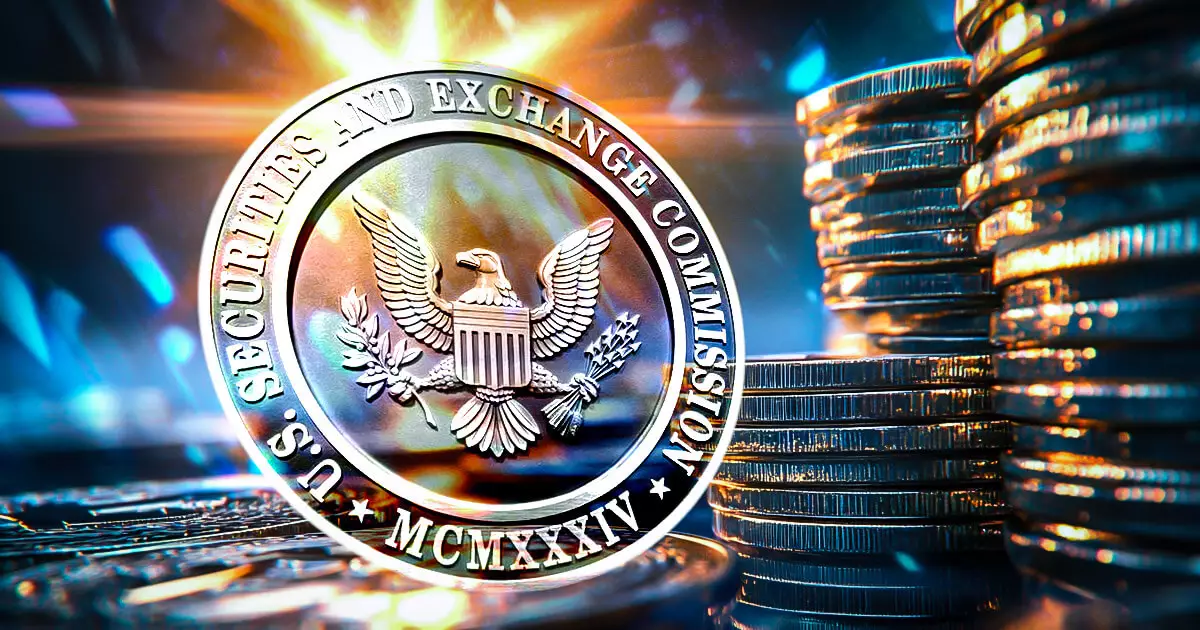In the evolving landscape of cryptocurrency, regulatory bodies are continuously attempting to catch up with technological advancements and market dynamics. One of the recent focal points has been the U.S. Securities and Exchange Commission (SEC) and its deliberations on crypto exchange-traded products (ETPs), particularly concerning staking mechanisms within these structures. The SEC’s Crypto Task Force convened on February 5 to engage with industry leaders, discussing the potential integration of staking in ETPs—a topic that underscores the intersection of regulatory concerns and innovative practices in the crypto sphere.
Staking is a fundamental component of proof-of-stake (PoS) blockchain networks, allowing participants to lock up their native assets—such as Ethereum (ETH) and Solana (SOL)—to validate transactions and secure the network. By doing so, validators earn transaction fees and newly minted tokens as rewards, establishing a system that underpins the security and functionality of these digital assets. However, from the regulatory perspective, there are complexities involved with incorporating staking activities into ETPs, especially considering investor protection and market integrity.
Industry representatives, including leaders from Jito Labs and Multicoin Capital, highlighted that by excluding staking from ETPs, investors are deprived of the full potential benefits of PoS assets. They argued that this could lead to diminished returns and inadvertently weaken the security of the blockchain networks, potentially deterring investment in these emerging markets.
The SEC has voiced apprehensions regarding the incorporation of staking into ETPs, raising important questions about the mechanics of transaction settlements and the tax implications of staking rewards. Notably, the potential disruption to the standard T+1 settlement cycle—where transactions are settled within one business day—remains a significant concern for the regulator. Additionally, the classification of staking services may blur lines between securities offerings and other non-regulated activities, prompting the SEC to proceed with caution.
This reluctance has previously led to the removal of staking features from initial applications for Ethereum-based ETPs, a move that illustrated the regulatory body’s cautious approach to these emerging financial instruments.
During the Crypto Task Force meeting, industry representatives proposed two innovative models to navigate the SEC’s concerns while accommodating staking within ETP structures. The first, the “Services Model,” allows a portion of assets held within the ETP to be staked through third-party validators, ensuring liquidity for redemptions while still participating in staking rewards. By maintaining a managed ratio, fund managers can control how much of the ETP is actively staked, thereby addressing potential redemptive challenges.
The second model, the “Liquid Staking Token Model,” offers a more profound distancing from traditional staking operations. In this approach, ETPs would hold liquid staking derivatives—tokens that represent staked assets—such as JitoSOL for Solana-based ETPs. This model mitigates concerns surrounding redemption timing directly by allowing ETPs to leverage liquid staking without engagement in the actual staking process.
A Shifting Regulatory Landscape: Opportunities and Challenges Ahead
While the SEC has historically taken a conservative approach toward staking within crypto ETPs, recent changes suggest that the agency may be revisiting its stance. The introduction of pro-crypto leadership within the SEC, particularly the nomination of Commissioner Mark Uyeda as acting chairman and the establishment of a Crypto Task Force led by enthusiast Hester Peirce, signals a potential openness to regulatory adaptations concerning cryptocurrencies.
Commissioner Peirce’s forward-looking comments infer that 2025 may usher in significant changes, possibly enabling the inclusion of staking in Ethereum ETPs. As institutional interest in crypto-based financial solutions intensifies, more sophisticated products—like options for spot Bitcoin ETFs—are being developed, suggesting a progressive shift in market dynamics.
The dialogue between regulatory authorities and industry stakeholders is pivotal for the future of cryptocurrency investments. As the SEC grapples with how to manage innovative financial instruments while protecting investors, the proposed models for incorporating staking into ETPs could represent a constructive compromise. Continued engagement between regulators and industry leaders will be essential in shaping an environment conducive to both compliance and innovation, paving the way for a more inclusive and robust crypto market.



















Leave a Reply